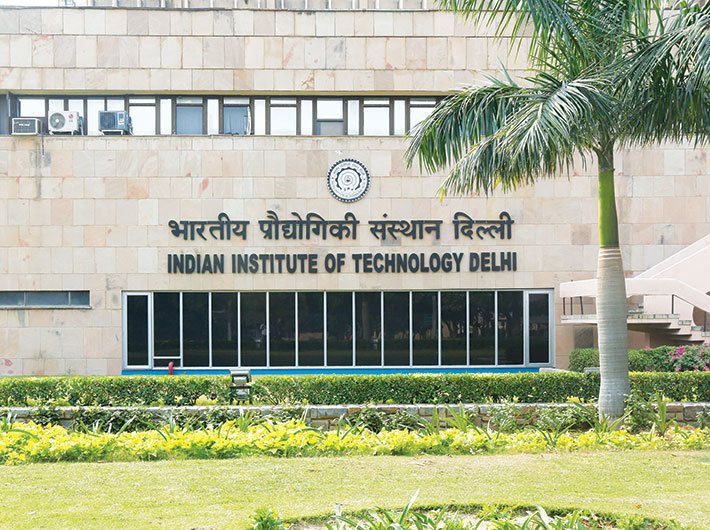Is the plan to count PhD students as IIT faculty members a step in right direction?
Hamidur Rahman, 27, a research scholar from the department of industrial engineering and operations research (IEOR), Indian Institute of Technology (IIT) Bombay, conducts a lecture every week for undergraduates and graduates in his department. “It’s not always mandatory,” he clarifies, but he does it because he enjoys teaching. After working on his research for eight hours every day, he spends some time preparing for his lecture, correcting assignments or checking answer-sheets of the BTech students from the institute. When students approach him to clarify a doubt, he’s more than willing to offer help. Rahman hopes that this work would be considered as teaching experience, as it’ll help boost his academic profile.
Interestingly, the IITs across the country will now count their doctoral students as part of their faculty, although not with an intent to benefit students like Rahman, but to bolster the profile of the premier institutions. Recently, Prakash Javadekar, minister, human resource development (HRD), gave nod to a proposal by the IIT Council to count five doctoral students as one faculty member for the purpose of calculating the student-faculty ratio in the IITs. While the IITs are facing grave shortage of faculty, the question is whether this is just an attempt at windowdressing by the government.
“Every PhD scholar has to teach undergraduate students for 10 hours per week. A regular IIT faculty member has a teaching workload of 40 hours per week. So five research scholars can easily be counted as one faculty member for the purpose of faculty-student ratio...,” a senior MHRD official was quoted as saying in The Indian Express.
This decision was taken during the 50th meet of the IIT Council in August last year. A proposal to offer the Prime Minister Research Fellowships to 1,000 BTech students from the IITs was also approved. Under this programme, BTech students will be able to enrol directly for PhD with a monthly fellowship of Rs 60,000 from the government. The fellowship scheme has been recommended to “increase the strength of PhD students in IITs and ultimately help in reducing the shortage of faculty”, according to an official press statement.
Although doctoral students are supposed to dedicate 10 hours of their schedule for teaching, their work in reality is mostly limited to conducting tutorials, correcting papers and helping with lab experiments, according to IIT professors.
Therefore, this decision is largely being perceived as a cosmetic solution, which is being implemented just for the sake of improving IIT rankings in global surveys. The IITs have been struggling to maintain their position in the global rankings. With the exception of IIT Madras, the institutes have slipped down a few spots, according to the Quacquarelli Symonds (QS) world university rankings of 2016-17. While IIT Madras was the only institute to gain five spots, IIT Delhi was ranked 185 – down from the previous year’s 179, IIT Bombay 219 – down from 202, IIT Kharagpur 313 from 286 and IIT Roorkee 399 from 391. This decline can be attributed to a number of reasons, and one of the major factors is the falling student-faculty ratio.
The MHRD recommends a student-faculty ratio of 10:1 for universities, in tandem with the international standard – which is also followed by the QS world university rankings. However, Indian universities that figure in the international rankings are far away from the recommended standard. According to a Hindustan Times report, the average student-faculty ratio across the IITs is 15:1. IIT BHU has the poorest ratio of 22:1 and IIT Kharagpur – the oldest one – has the next worst ratio of 19:1. While IIT Bombay fares a bit better with the ratio of 14:1, IIT Delhi has settled for 16:1. As MHRD plans to introduce a concept of non-resident students, the IITs are expected to enrol 28,000 more students by the year 2020. If the student-faculty ratio, which has been consistently low for the last few years, isn’t corrected it’ll be further difficult to reach the recommended ratio.
Paucity of faculty
DNA newspaper reported last month that according to government records, the IITs are running on almost half the sanctioned number of faculty members. Out of 5,073 sanctioned faculty positions in the IITs, 2,671 are lying vacant.
Explaining the significance of faculty-student ratio in the context of global rankings, V Ramgopal Rao, director, IIT Delhi, says, “It [low student-faculty ratio] affects the IITs in a significant way. If this ratio is above 15:1, we get zero marks for that parameter. Almost all IITs [from the rankings list] score zero.”
The reason behind these dwindling number of faculty members is the increase in the number of students, says Raghunath Shevgaonkar, professor, IIT Bombay, and ex-director, IIT Delhi. “The student to faculty ratio was close to 10:1 till 2008, but students’ strength was increased by 54 percent after the introduction of OBC reservation. In addition, the IITs put more thrust on research and increased the number of PhD students. The faculty strength could not be increased suddenly in that proportion and consequently the ratio worsened to 15-16,” he says.
As most of the old IITs were founded in the 1950s, almost all of the the first generation of faculty had retired by the year 2000 – creating a large number of vacancies in the institutes, according to Shevgaonkar. He explains, “In spite of best efforts, it is not possible to recruit more than 50-60 faculty members per year in an IIT, if no compromise is made on the quality. About 15-20 faculty members retire every year in the old IITs. So the net gain is only 30-40 members per year, whereas the shortfall per old IIT is about 350-400. In this scenario, the prescribed student to faculty ratio of 10 can be reached only in about 10 years – assuming other parameters remain unchanged.”
Being prestigious institutes of national importance, recruitment of faculty for the IITs can become an arduous affair, and finding the right candidate can be time-consuming. Rao notes that the process of recruitment is although not complicated and “very autonomous”, there is a shortage of qualified candidates. “The problem is not with the number of applications,” he says. “It’s with the quality of these applications. On average, we recruit one faculty member from every 100 applications we receive. Quality of these applications is not what we would want to see in the faculty of an institute like the IIT. The pool available for the recruitments is of limited size.” In this case, with more IITs joining the existing lot, the recruitment of the faculty can be a toilsome task.
But R Subrahmanyam, additional secretary (technical education), MHRD, claims that the IITs receive ample teaching support. “The IITs have a lot of doctoral students who share the teaching work. As such, there is never any shortfall of teaching support in IITs. As far as the permanent faculty is concerned, the IITs are choosy and are always on the lookout for bright faculty. This process goes on continuously,” he says.
However, a senior official from IIT Guwahati, who does not wish to be named, admits that there indeed is a shortage of human resource in the IITs like any other institution. “But the situation is changing gradually. The number of students interested in taking up research as a career is increasing,” he says.
Quality of education
Apart from the glide-down in global rankings, whether the low student-faculty ratio affects the quality of education at the IITs is also a question up for discussion. Some say that the dearth of permanent faculty is usually compensated by visiting or guest faculty. However, when quality concern is the main reason behind the sparse recruitments in the institutes, what is the quality of the doctoral students or visiting faculty involved in teaching, is a question that needs to be addressed.
Shevgaonkar says, “The quality of education as such is not directly affected [by the low student-faculty ratio], except the class sizes have become large and there is no close interaction with the students as it used to be earlier.”
His view is seconded by Rao, but he further says that because of the large size of the classes – especially in the first year when the subjects are common for all branches – a lot of students are not able to cope with the pace of the teacher. “Students who join us are used to coaching kind of classes [private coaching centres]. And these being the top students, they’ve gone through a system where they have received a lot of personal attention. Here, they suddenly become a part of the crowd,” he says. This is the reason a lot of students get backlogs in their first year.
In such a case, including scholars in the faculty might seem a good idea. After all, foreign universities like Stanford count their doctoral students as faculty. But professor Rao doesn’t think so. “In the IITs, we are very particular. We let only our faculty members teach. Our doctoral students help conducting tutorials sometimes, but they don’t teach. So, we have a problem showing them as a part of our faculty.”
Also, this step may improve the ranking of these institutes for one parameter, but might cut points for another. “By doing this, the IITs can show improvement in the student to faculty ratio but this will reduce the published research per faculty, which is another important parameter in rankings. So, the only robust solution is to build the quality faculty strength,” says Shevgaonkar.
The best possible imminent solution for the IITs tackling the faculty crisis is to recruit foreign faculty, suggests Rao. It will help in making these institutes more vibrant. The government, on its part, is planning to host ‘Teach in IITs’ fairs abroad to attract international faculty. It has already approved relaxation of norms to hire foreign faculty. The threshold of salary for work visa of the foreign nationals has been lowered significantly by the government.
pranita@governancenow.com

